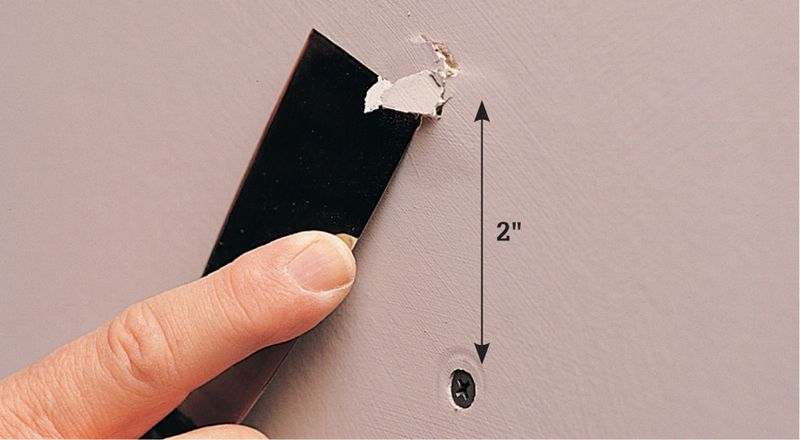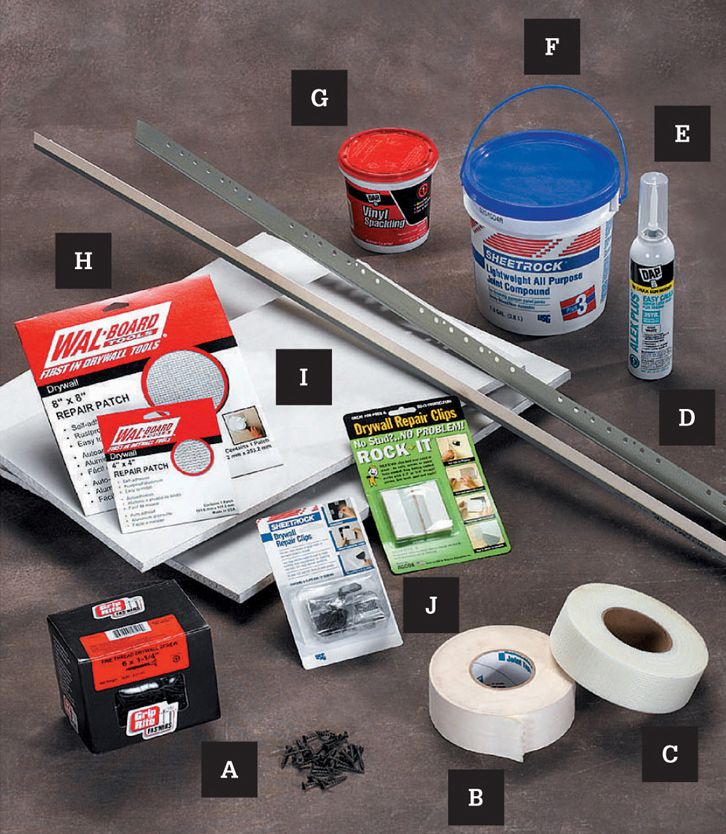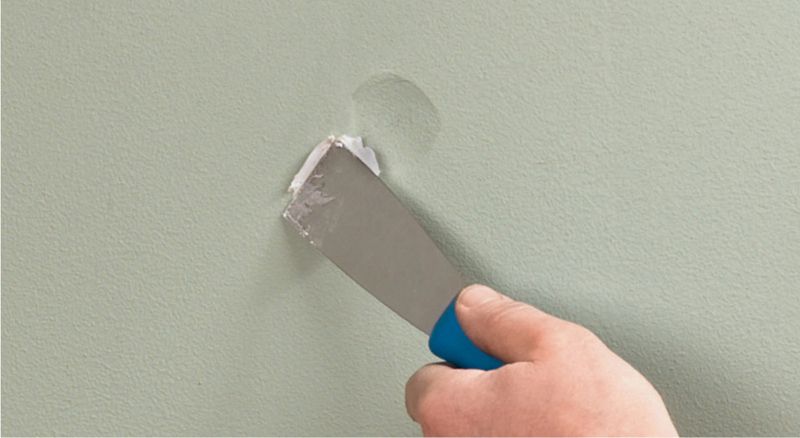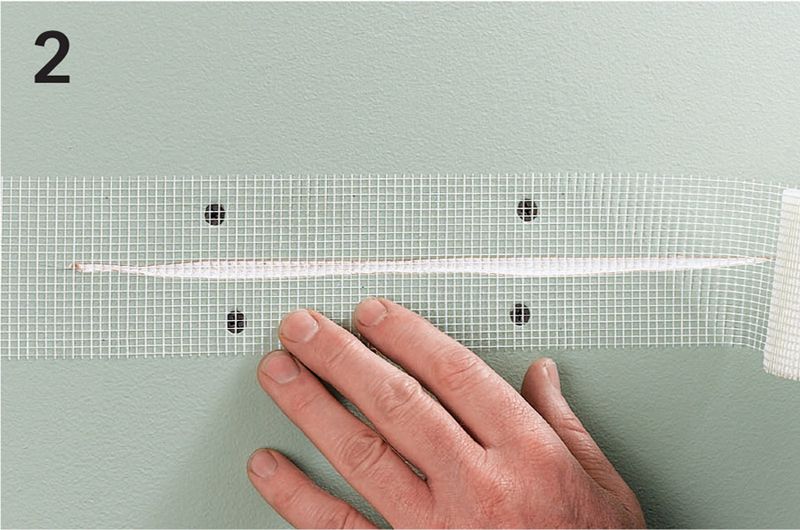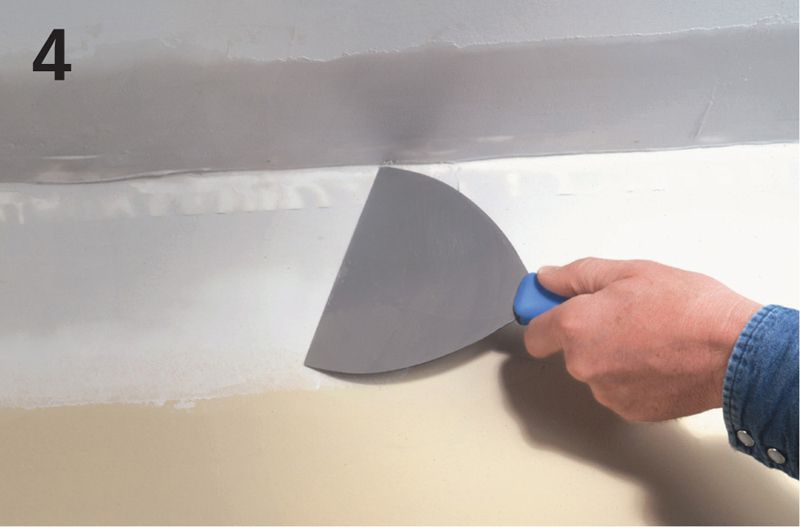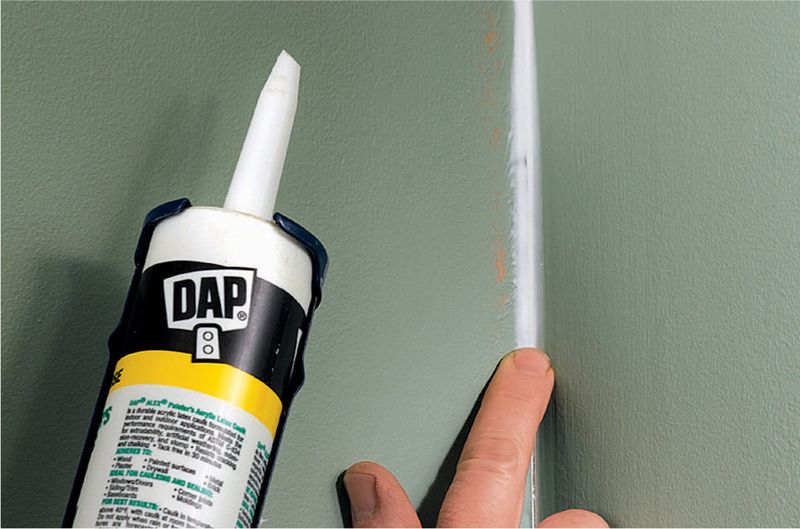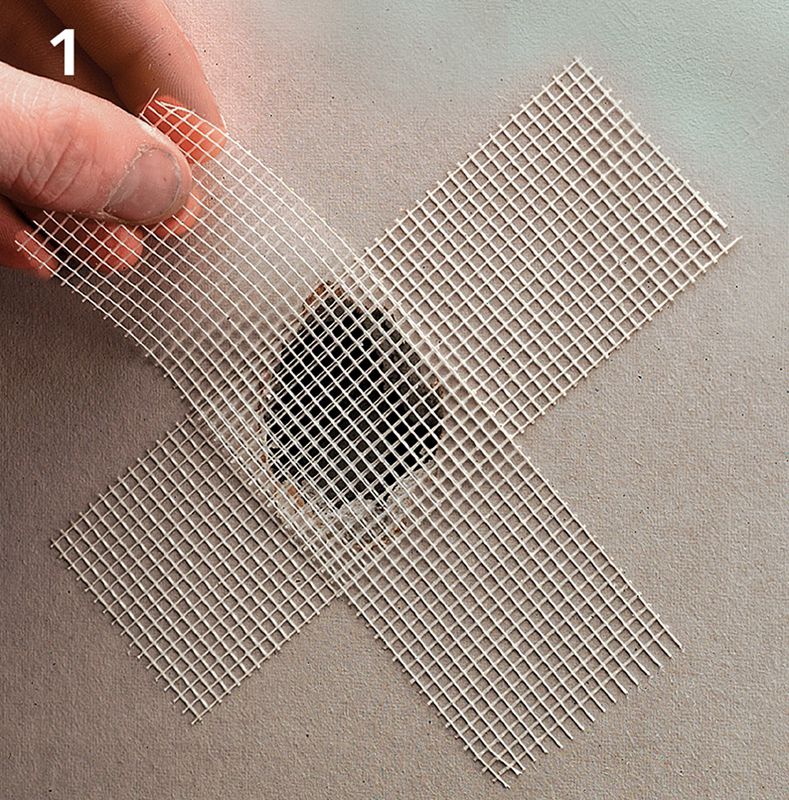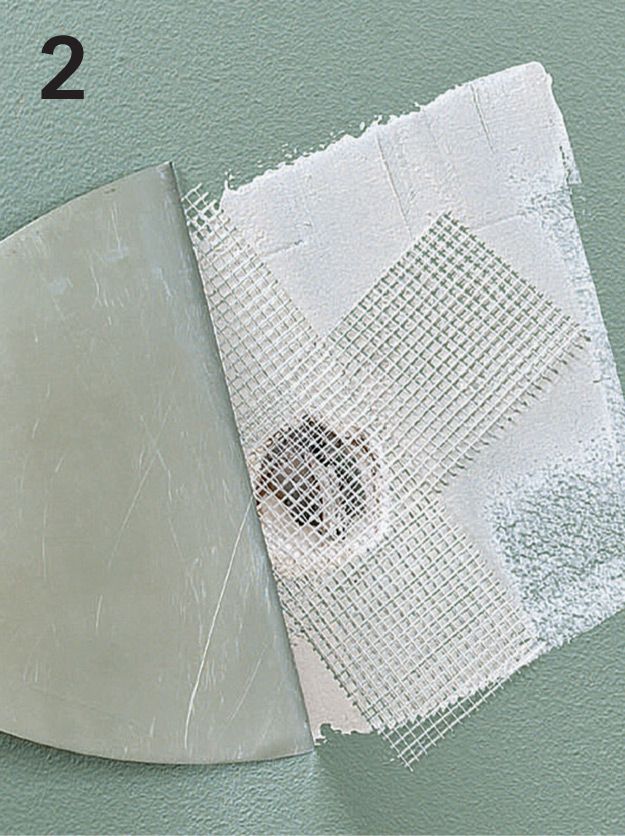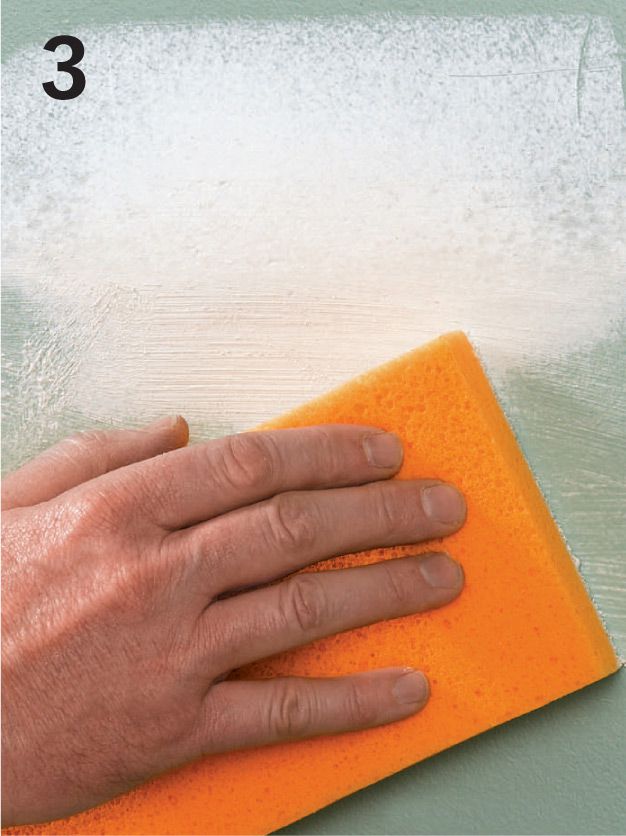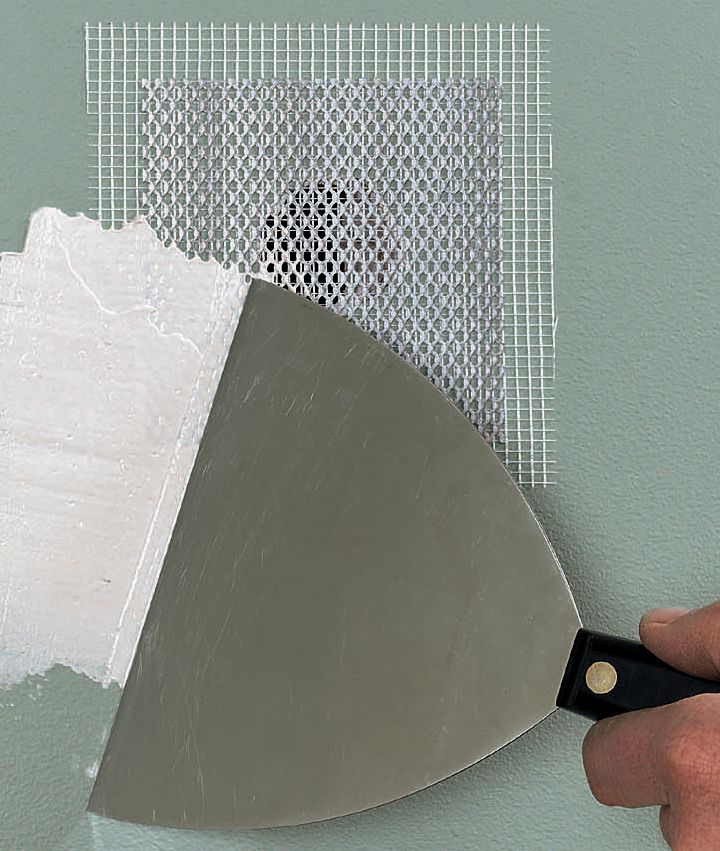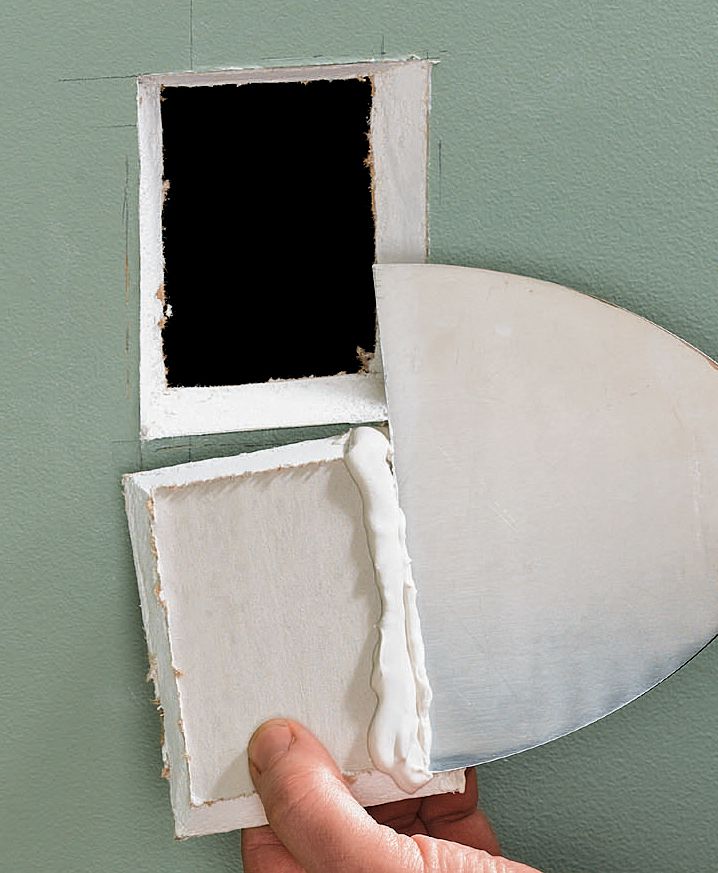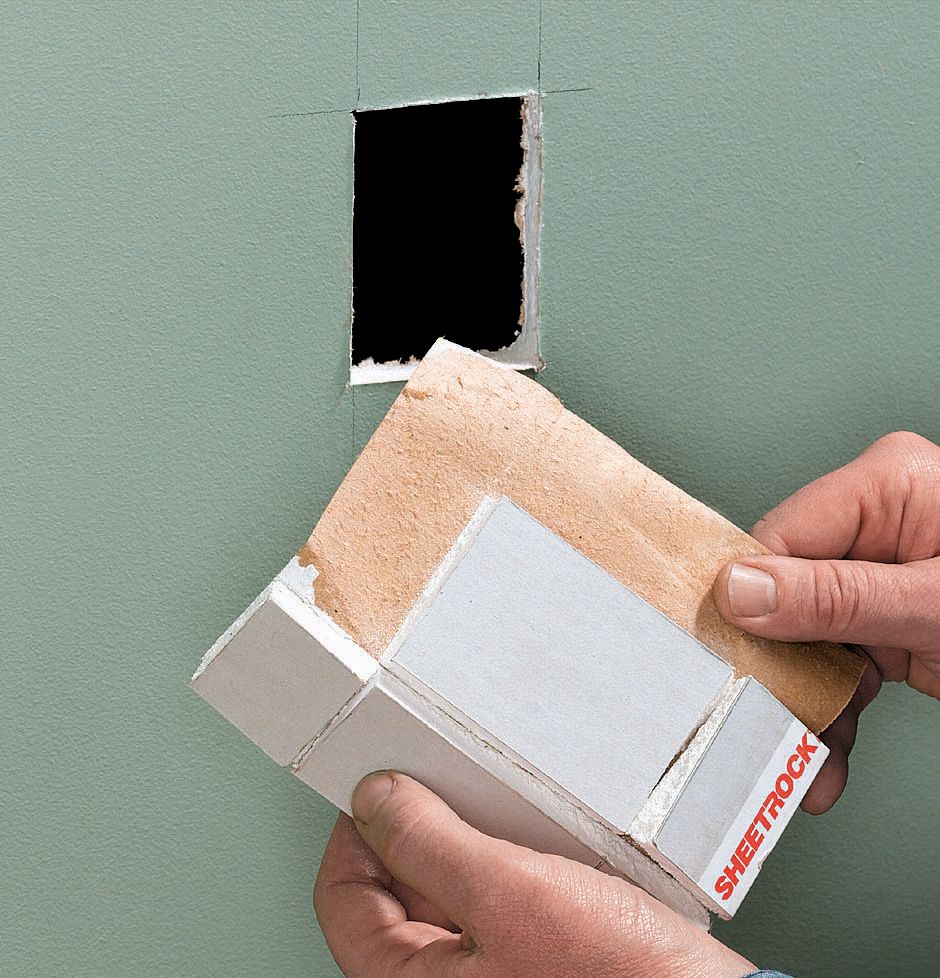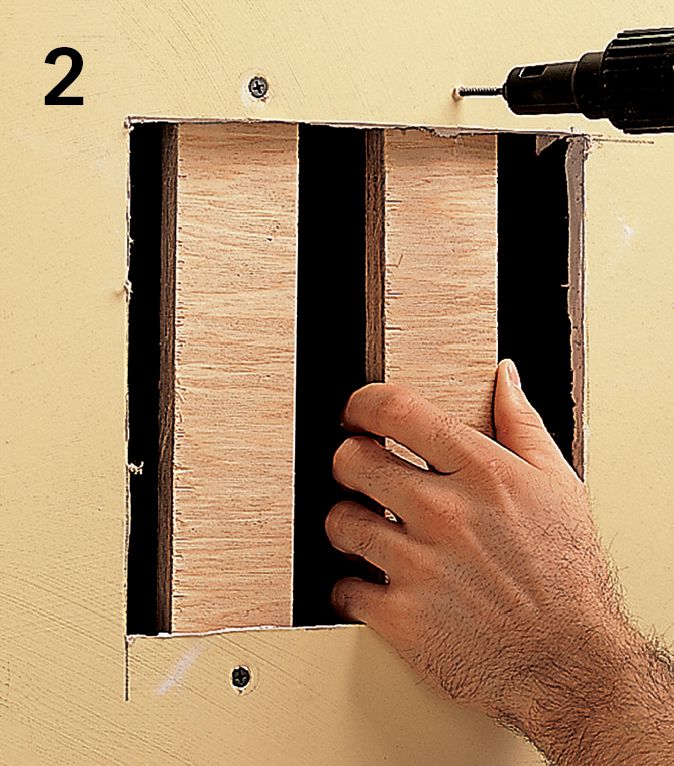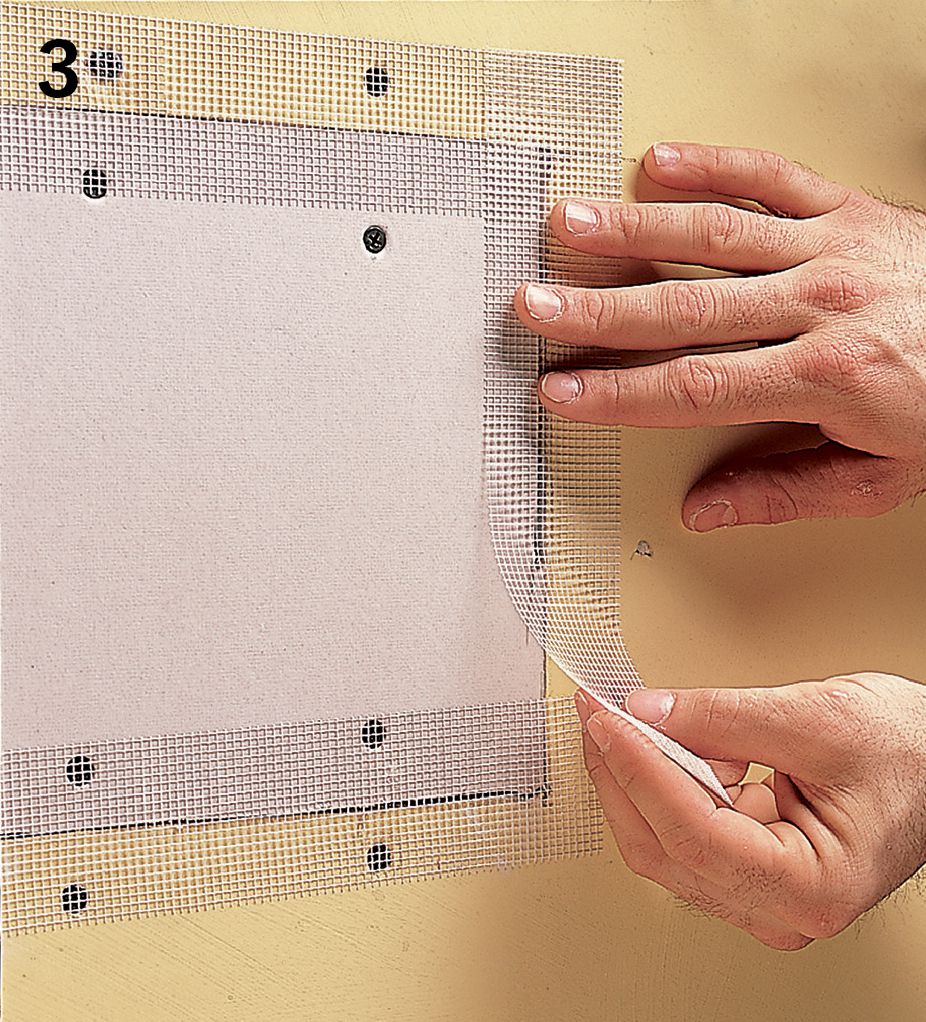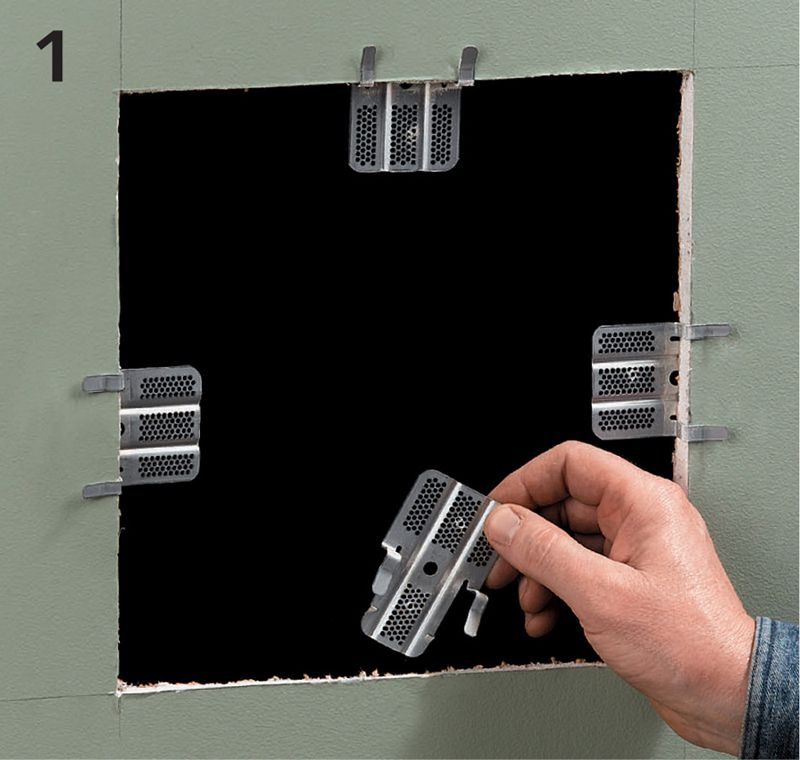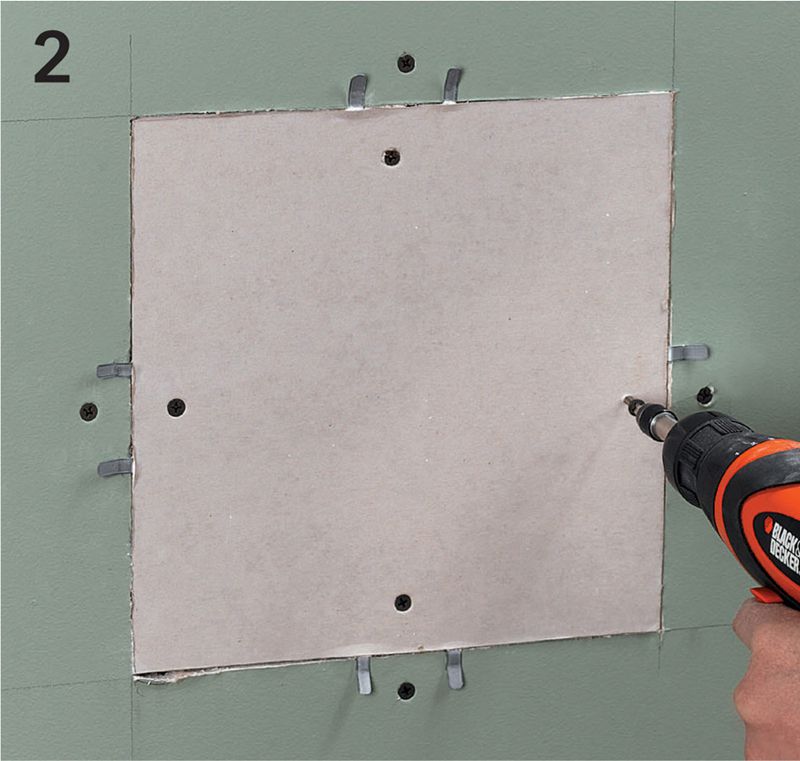WALLS & CEILINGS
DRYWALL: REPAIRING
Patching holes and concealing popped nails are common drywall repairs. Small holes can be filled directly, but larger patches must be supported with some kind of backing, such as plywood. To repair holes left by nails or screws, dimple the hole slightly with the handle of a utility knife or taping knife and fill it with spackle or joint compound.
Use joint tape anywhere the drywall’s face paper or joint tape has torn or peeled away. Always cut away any loose drywall material, face paper or joint tape from the damaged area, trimming back to solid drywall material.
All drywall repairs require three coats of joint compound, just as in new installations. Lightly sand your repairs before painting or adding texture.
To repair a popped nail, drive a drywall screw 2" above or below the nail, so it pulls the panel tight to the framing. Scrape away loose paint or compound, then drive the popped nail 1/16" below the surface. Apply three coats of joint compound to cover the holes.
Most drywall problems can be remedied with basic dry wall materials and specialty materials: drywall screws (A); paper joint tape (B); self-adhesive fiberglass mesh tape (C); corner bead (D); paintable latex or silicone caulk (E); all-purpose joint compound (F); lightweight spackling compound (G); drywall repair patches (H); scraps of drywall (I); and drywall repair clips (J).
If drywall is dented, without cracks or tears in the face paper, just fill the hole with lightweight spackling or all-purpose joint compound, let it dry, and sand it smooth.
 HOW TO REPAIR CRACKS & GASHES
HOW TO REPAIR CRACKS & GASHES
Use a utility knife to cut away loose drywall or face paper and widen the crack into a “V”; the notch will help hold the joint compound.
Push along the sides of the crack with your hand. If the drywall moves, secure the panel with 1 1/4" drywall screws driven into the nearest framing members. Cover the crack and screws with self-adhesive mesh tape.
Cover the tape with compound, lightly forcing it into the mesh, then smooth it off, leaving just enough to conceal the tape. Add two more coats, in successively broader and thinner coats to blend the patch into the surrounding area.
For cracks at corners or ceilings, cut through the existing seam and cut away any loose drywall material or tape, then apply a new length of tape or inside-corner bead and two coats of joint compound.
Variation: For small cracks at corners, apply a thin bead of paintable latex or silicone caulk over the crack, then use your finger to smooth the caulk into the corner.
 HOW TO PATCH SMALL HOLES IN DRYWALL
HOW TO PATCH SMALL HOLES IN DRYWALL
Trim away any broken drywall, face paper, or joint tape around the hole using a utility knife. Cover the hole with crossed strips of self-adhesive mesh tape.
Cover the tape with all-purpose joint compound, lightly forcing it into the mesh, then smooth it off, leaving just enough to conceal the tape.
Add two more coats of compound in successively broader and thinner coats to blend the patch into the surrounding area. Use a drywall wet sander to smooth the repair area.
 OTHER OPTIONS FOR PATCHING SMALL HOLES IN DRYWALL
OTHER OPTIONS FOR PATCHING SMALL HOLES IN DRYWALL
Drywall repair patches: Cover the damaged area with the self-adhesive patch; the thin metal plate provides support and the fiberglass mesh helps hold the joint compound.
Beveled drywall patch: Bevel the edges of the hole with a drywall saw, then cut a drywall patch to fit. Trim the beveled patch until it fits tight and flush with the panel surface. Apply plenty of compound to the beveled edges, then push the patch into the hole. Finish with paper tape and three coats of compound.
Drywall paper-flange patch: Cut a drywall patch a couple inches larger than the hole. Mark the hole on the backside of the patch, then score and snap along the lines. Remove the waste material, keeping the face paper “flange” intact. Apply compound around the hole, insert the patch, and embed the flange into the compound. Finish with two additional coats.
 HOW TO PATCH LARGE HOLES IN DRYWALL
HOW TO PATCH LARGE HOLES IN DRYWALL
Outline the damaged area using a framing square. (Cutting four right angles makes it easier to measure and cut the patch.) Use a drywall saw to cut along the outline.
Cut plywood or lumber backer strips a few inches longer than the height of the cutout. Fasten the strips to the back side of the drywall using 1 1/4" drywall screws.
Cut a drywall patch 1/8" smaller than the cutout dimensions and fasten it to the backer strips with screws. Apply mesh joint tape over the seams. Finish the seams with three coats of compound.
 HOW TO PATCH LARGE HOLES WITH REPAIR CLIPS
HOW TO PATCH LARGE HOLES WITH REPAIR CLIPS
Cut out the damaged area using a drywall saw. Center one repair clip on each edge of the hole. Using the provided drywall screws, drive one screw through the wall and into the clips; position the screws 3/4" from the edge and centered between the clip’s tabs.
Cut a new drywall patch to fit in the hole. Fasten the patch to the clips, placing drywall screws adjacent to the previous screw locations and 3/4" from the edge. Remove the tabs from the clips, then finish the joints with tape and three coats of compound.

